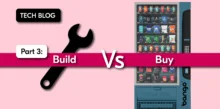The View from CTIA Las Vegas
by Sukey Miller

As ever, it was the conversations between the presentations, the quick exchange in the coffee stand queue, which gave us the mood of the industry. It’s clear that the Latin American (LatAm) market opportunity is a focus amongst the industry’s largest players. Though LatAm is a long way behind the USA and other developed countries in the adoption of the smartphone, there are currently about 100 million active mobile internet users, and that number looks set to triple in the next three years. Beyond that, the modern US-based Latino consumer was identified as a key target demographic, and the event organizers brought together voices as diverse as Jennifer Lopez and AC Slater from Saved By The Bell to give their take on the trend.
We were fascinated by discussion of how social sharing is helping to drive m-commerce. Marcelo Claure, Chairman and CEO of Brightstar, shared details on how Viva Movil has harnessed Facebook social sharing to drive sales of branded “JLo” smartphones and accessories, from inside Facebook. Such innovations hint at broader revenue streams for the social networking giant. We also enjoyed Gibu Thomas, Global Head of Mobile at Walmart, speaking about Walmart’s position on m-commerce. His powerful observation, that “eCommerce brought the store to the web, but mobile brings the web to the store”, reminds us that the smartphone is in the process of disrupting ‘bricks and mortar’ commerce.
The talk amongst the operators continues to focus on how charge to bill capabilities – their ace card of a billing relationship with millions of users – can be used to support new business models for paid content. In particular, there was discussion on in-app purchases, streaming music by the track and other forms of micropayments. These emerging models play on the ability to charge with a negligible fixed cost, and using frictionless operator billing – an experience that the credit card, lumbered with high fixed costs, cannot hope to match.
One reservation that we’ve long held was again in evidence at the show. The big name speakers and exhibitors were drawn from the largest companies in the mobile space. Of course this is the group with the deepest pockets, and who can afford to attend. Unfortunately this tends to be at the expense of the app developer community, made from small companies with even smaller marketing budgets. Though CTIA 2013 works hard to represent this community, with app focused content sessions and a mobile app pavilion, it was still possible to spend days at the show without ever stumbling across app developers, who are arguably the engine of mobile innovation today.
Still, the event had a notably upbeat feel, and not just because of the crowds of gamblers at the craps tables. The halls were busy and exhibition stands were bustling.
Finally, we can’t resist sharing CTIA’s ‘The Amazing Smartphone’ Infographic. It’s an excellent summary of our industry in 2013, and the stat which rings out for us is that the app economy, essentially born in 2007, today employs over 500,000 people. Against that background, we can look forward to many more CTIA events in the years to come. We just hope for our pockets and sanity that few of those events will be held in Las Vegas…
![]()
Subscribe to our newsletter
Get the latest subscription bundling news and insights delivered straight to your inbox.



